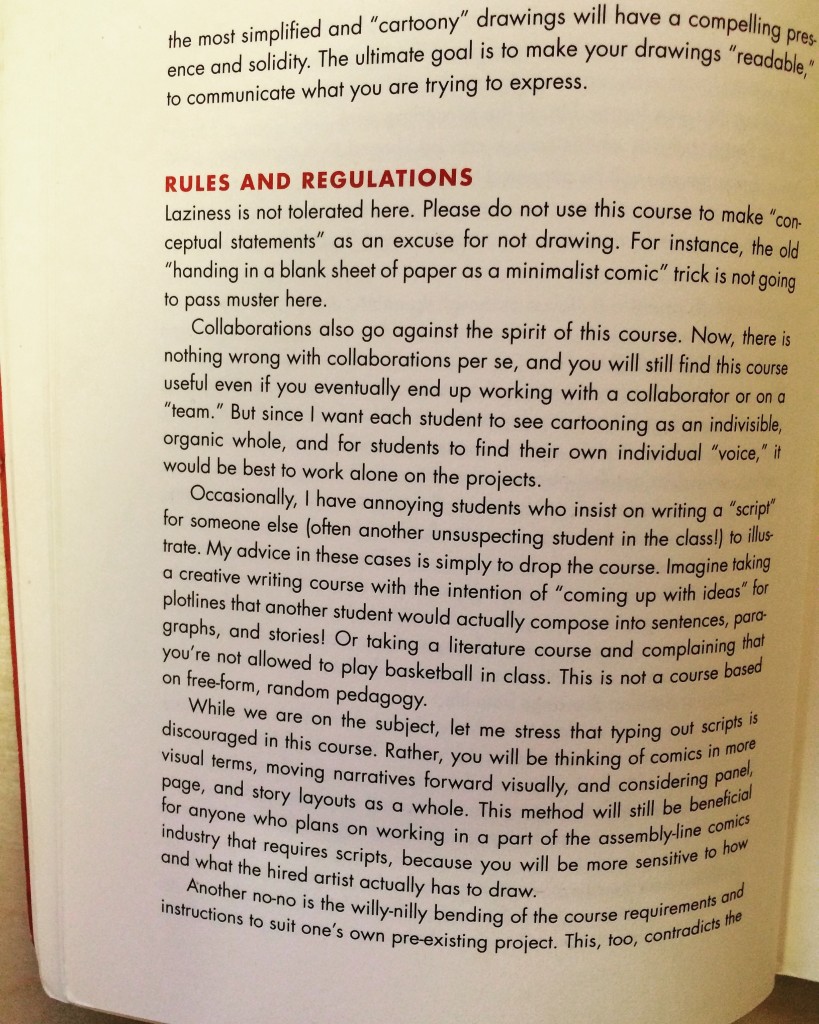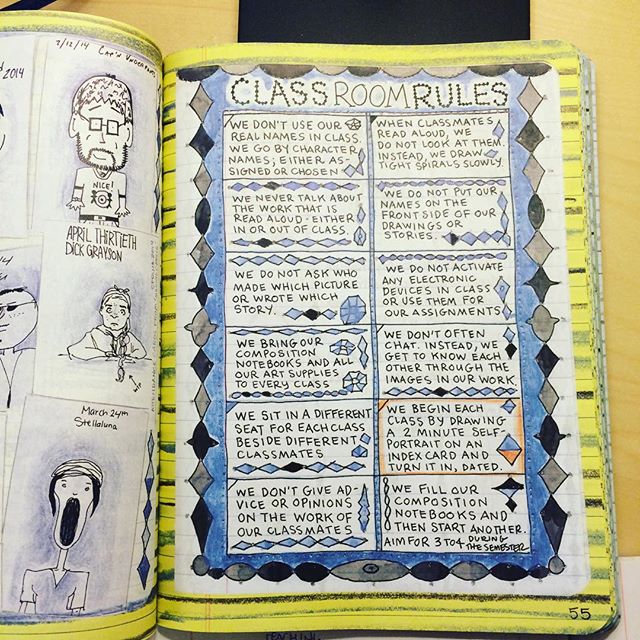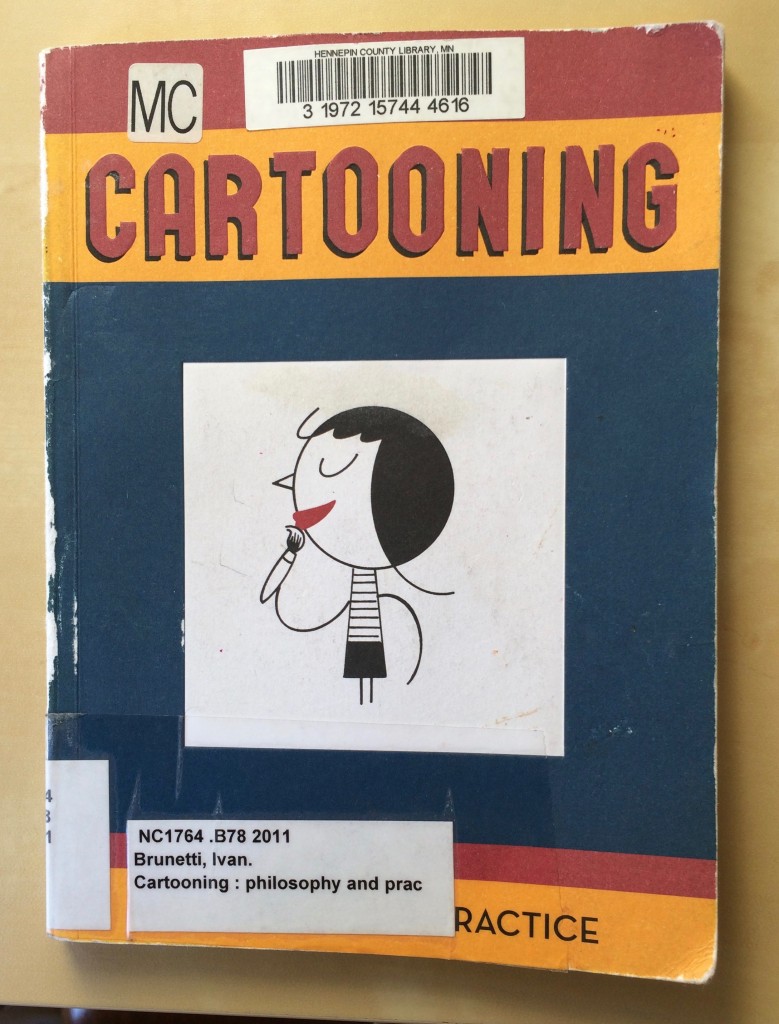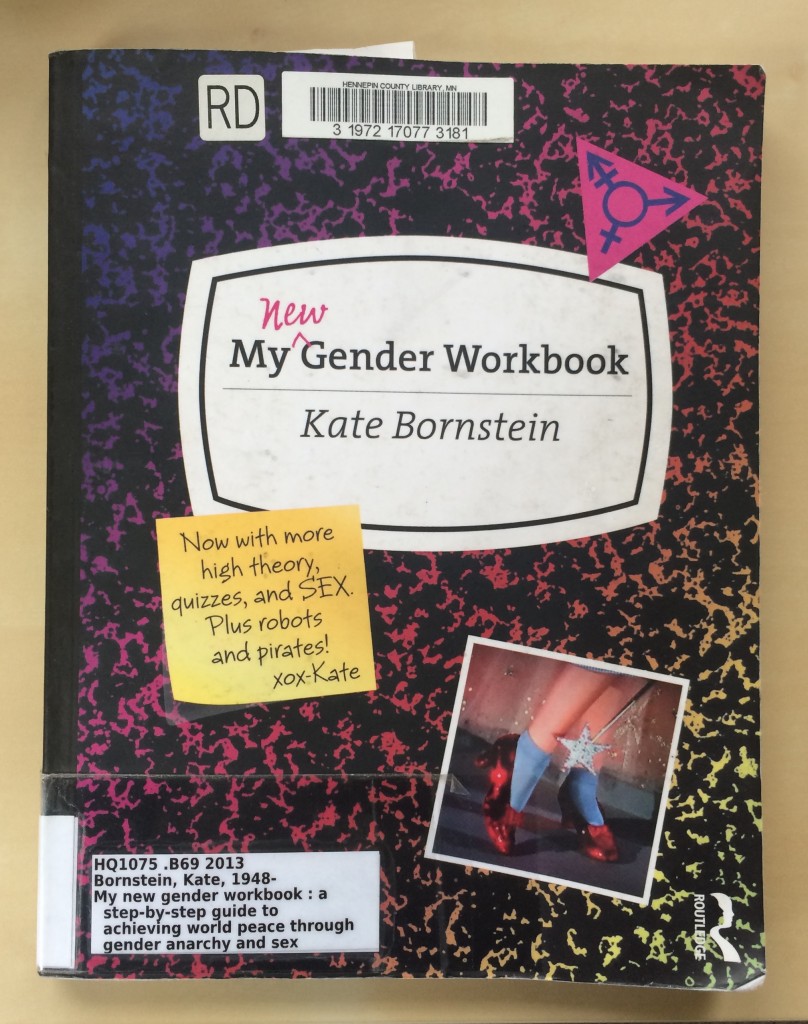After reading Lynda Barry’s Syllabus, I was inspired to be more creative in my writing notes. Here are two recent pages:


Tag: undisciplined book project
More on the Syllabus
I’m deep in the midst of working on a new book project about my stories as an (ex?) teacher and educator. So far, researching it has been a lot of fun. Right now, I’m still thinking about syllabi as format and content. Here are a few more sources that I want to review in the next few days:
Ivan Brunetti’s Cartooning: Analysis
Cartooning: Philosophy and Practice
What
A syllabus with fifteen week-long lessons on learning how to draw and “write with pictures.”
Format
- “Formal” syllabus at beginning
- 15 lessons
Content
- Syllabus contains: course description, lesson plan, required texts, terminology, the sketchbook, rules and regulations, useful tools, a few words on computers
- Sections of syllabus included commentary and personal reflections
- Lessons contain: explanation of key concept, several exercises, homework
- Minimal illustrations/cartoons
- Mostly (small, typed–is it futura?) text
- 1 page appendix with recommended books
Purpose
This ‘classroom in a book’ provides the aspiring cartoonist with a practical means for creative self-discovery and the exploration of complex ideas through the iconic visual language of comics (1).
About this Book
Useful for my book?
In quickly reviewing this book, I’m inspired to think again about structuring my project as a syllabus. But, would it work as well? I especially like how he incorporates his philosophy and personal reflections into his introduction and syllabus parts. He also includes some snark. It almost feels like an intervention into the syllabus-as-usual (dry, boring, boiler-plate, overly practical).
I’m struck by the differences between Brunetti’s and Barry’s tone/approach. Barry cites Brunetti as one of her key mentors. Part of the differences are because these are different projects. Brunetti’s book is an actual syllabus with lessons, while Barry’s book is a collection of reflections on and artifacts from her syllabi/classes. But, there’s more to the differences between their books.


While Barry’s pages were crammed with images, doodles and hand-written and typed text, Brunetti’s pages are sparse with a simple typed font and lots of white space. His images are almost exclusively on separate pages, not mixed in with the text like Barry’s are. Both exude a passion for teaching and drawing, but Barry expresses her passion with more enthusiasm and vigor (as evidenced through her reflections, illustrations and gushing notes about/to students), while Brunetti employs sarcasm, self-deprecating humor and the ridiculing of “bad” students.*
*note: I’m basing my assessment of Brunetti on his syllabus and a very brief look at his 15 lessons. Since I’m thinking about “taking” his course, I don’t want to spoil it by reading ahead.
I would like my tone to be somewhere between these two, enthusiastic without too much gushing (and crowded images/text) or too much cynical distance (and sparse pages).
A Tentative Offering
I’m working on a new book in which I attempt to take some of my academic research (on feminist/queer ethics) beyond the academy to a space beside and besides it. What does that look like? Not sure. I’m using my story blog to engage in the process of figuring out what to do and how to do it.
One thing that is haunting* (mostly productively) my process is how to resist the urge to make this book—which is loosely about character, virtue ethics, and troublemaking—a book of advice or a how-to manual, based on my research, writing and teaching. I’d like this book to be a helpful resource for others on “how to be,” but I’m trying to find a way to do that that isn’t about giving specific advice or prescriptions. I don’t want to tell anyone, especially my kids who are one of my primary audiences for this book, “This is how you should live.” I want to provide an example of one way that (mostly) works for me, and invite them to engage in the process of figuring out their own way. My constant refrain: “This is not a how-to manual, but an invitation to engage.” But, even as I deeply embrace this refrain, I wonder, is an invitation enough? If I’m not giving any advice, what am I offering?
*I use the word haunting deliberately here. My resistance to advice runs deep and requires more attention then I have time/space for in this post. I need to put digging deep into this resistance on my to-do list for this project. I know it relates to a stubborn refusal to be an expert and a reluctance to tell others, even my kids, what to do. I don’t see my resistance/refusal/reluctance as bad or wrong, just (sometimes) dangerous.
Here’s one offering, a tentative draft of words that my best self (or selves?) lives by. These are ideals that I’ve created for myself and that I aim for, but never quite achieve.
Words That My Best Self Lives By
- Don’t be an Asshole.
- Avoid and Expose Bullshit.
- Never Stop Giving a Fuck.
- Don’t Be Too Afraid to Piss People Off.
I’ll have more to say about these ideals soon.
Kate Bornstein’s Workbook: Analysis
My New Gender Workbook
What
“A step-by-step guide to achieving world peace through gender anarchy and sex positivity.”
Format
- Book with clear chapters
- Designed to look like composition notebook (cover)
- Mostly text, with some images
Content
- Narrative text describing different aspects of gender identity
- 3 Kate avatars, representing 3 different Kate identities, with additional commentary/stories, sprinkled throughout text in margins
- Tweets, comments, stories from other voices (often twitter users) about topics in margins
- Incorporating twitter voices even more, whole sections devoted to twitter threads and twitter users answers to questions like, Who Am I?
- Blank (or mostly empty) pages for jotting down ideas, completing Kate’s assignments, several blank pages in the back
- Various exercises, like “The 10 minute a day gender outlaw exercise” (56-57)
- Crossword puzzles
- Section on the beginning about comfort (4-7)
- Concluding chapters explore what to do with new information/understanding developed by completing gender workbook
- Book ends with series of Kate’s favorite “g’nite” tweets that Kate has written
Purpose
A resource/survival guide for readers to use to “put the ideas and theories [introduced/discussed in workbook] to work with the intention of putting an end to the suffering of all sentient beings” (xiii).
Useful for my book?
I like the inclusion of Kate’s many voices (3 different avatars) and the incorporation of tweets (in margins). I wouldn’t mind including some of my own tweets + social media posts (tumblr? instagram?). I also like how Kate uses the margins to create space for alternative accounts–zie puts different voices/theories/ideas beside each other. And, I like Kate’s use of quizzes. I had some quizzes in my last book and found it be a lot of fun to create them.
I appreciate how Kate leaves some blank pages at the end and encourages readers to write on/in the text. For my project, I want to experiment with how to get readers to take notes, write in margins. Is leaving bigger margins enough? Should I provide instructions/exercises for writing in the book? I’m not sure about this one. Does it become too heavy-handed when you ask the reader to write in the margins? How do you encourage that marginalia without requesting it?

